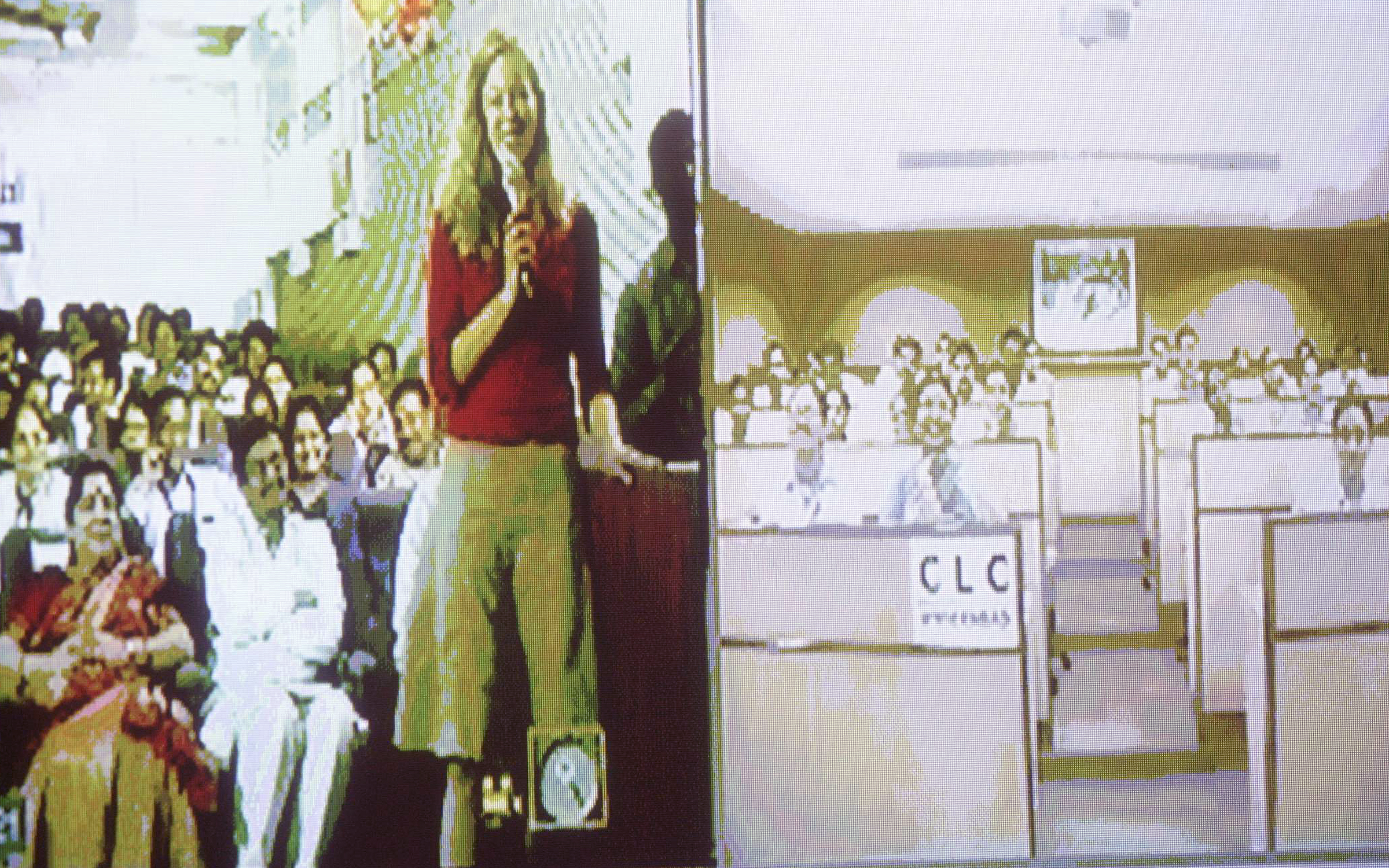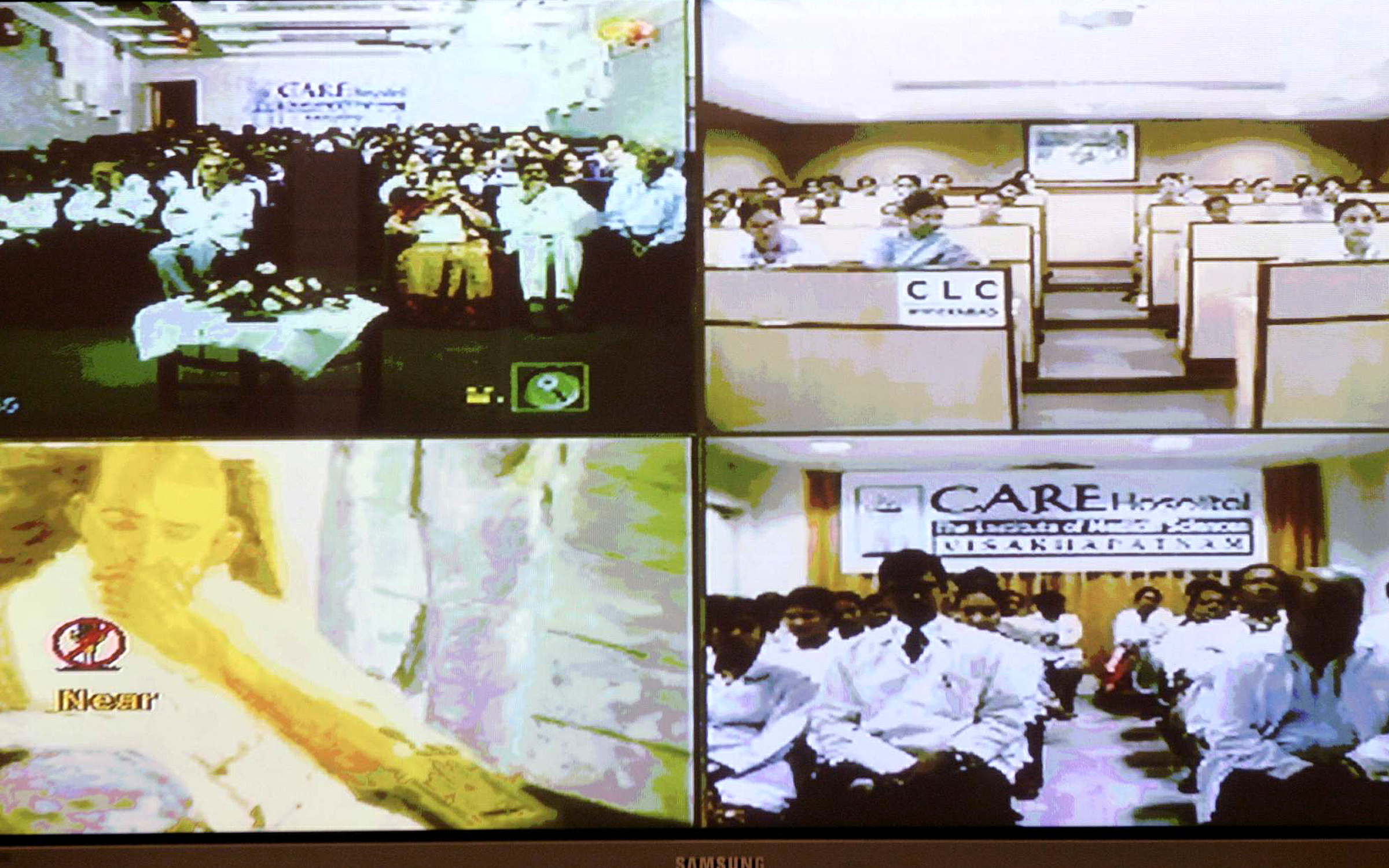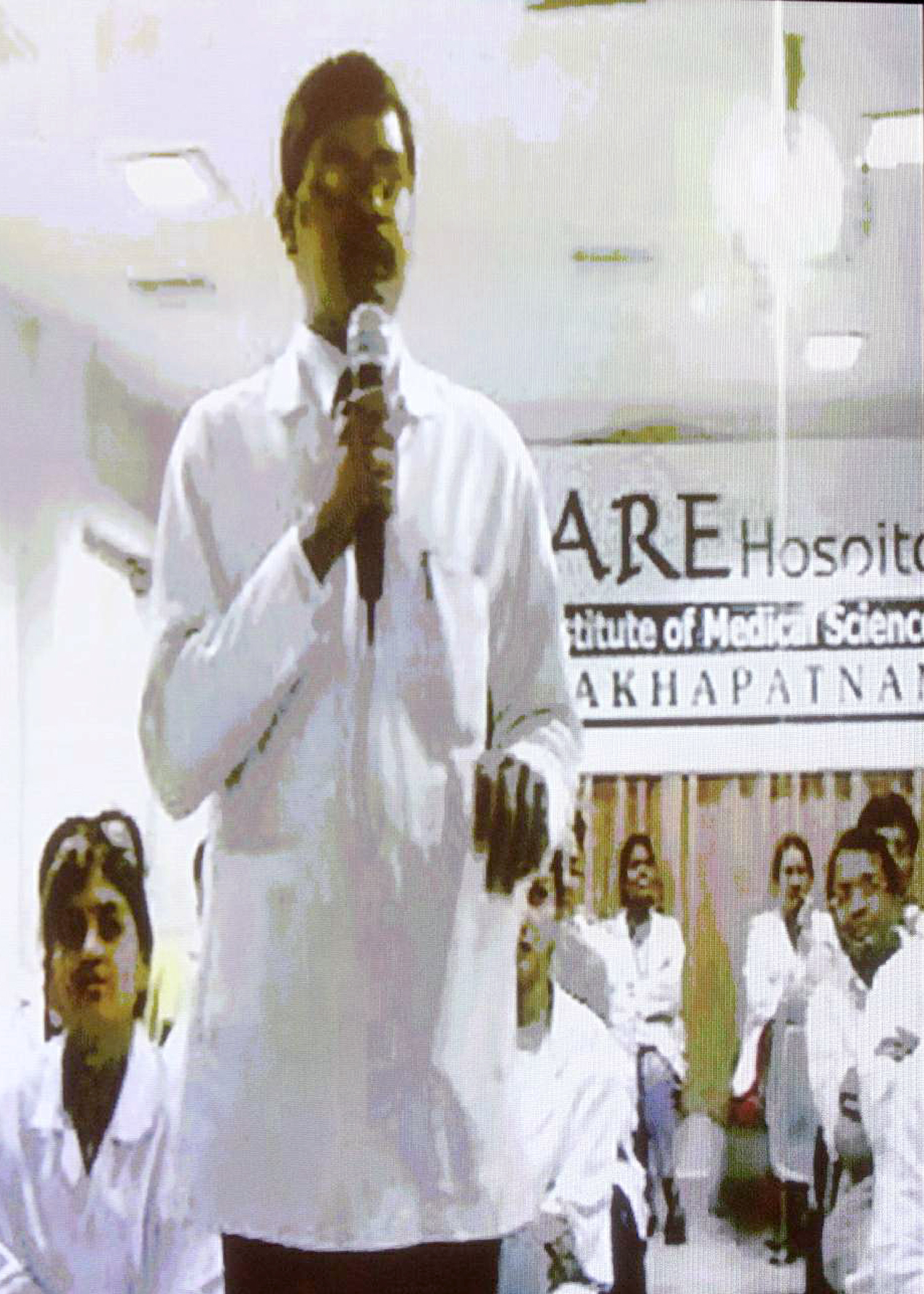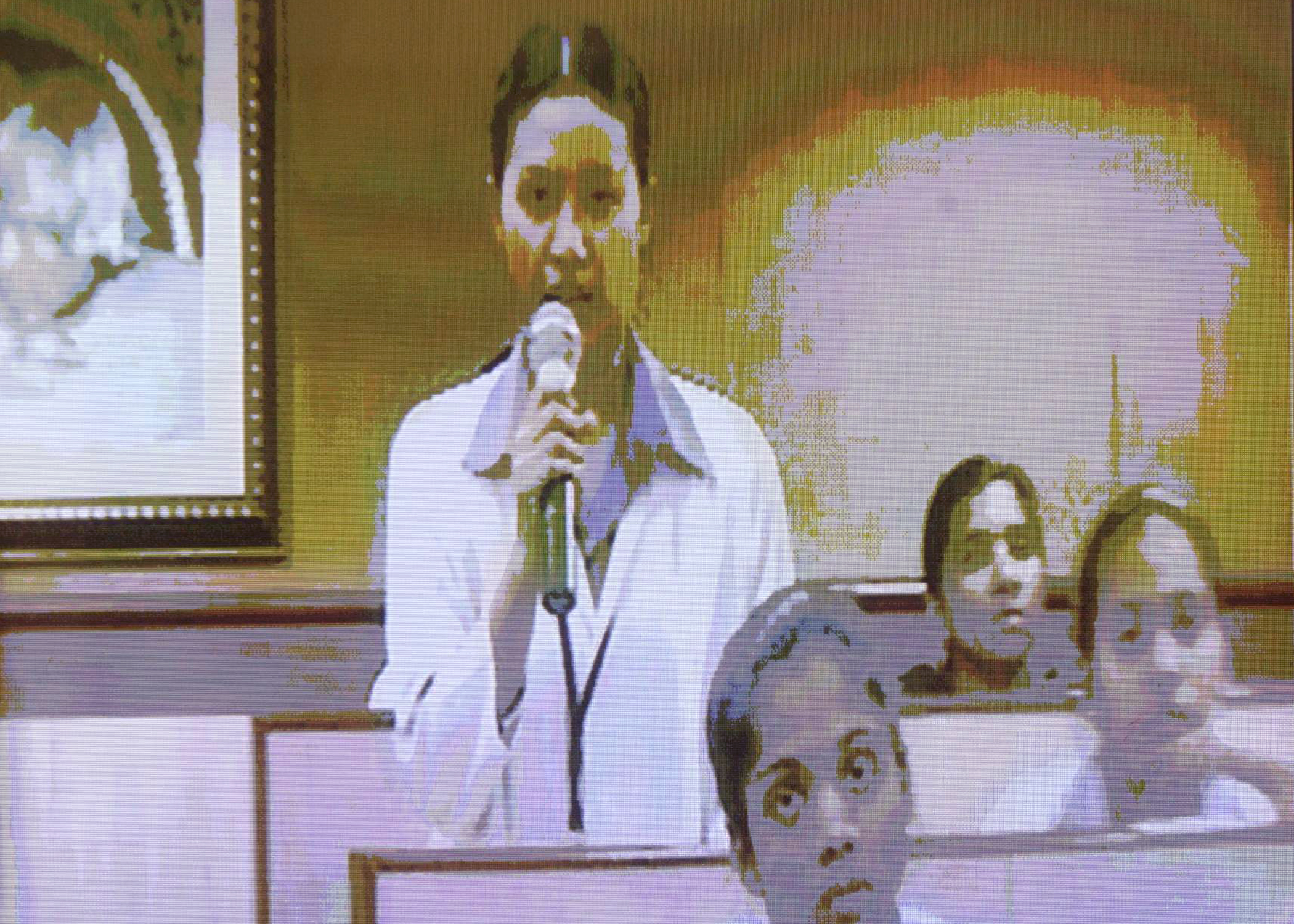|
|
ADDRESS TO THE NURSING STUDENTS AT THE CARE HOSPITAL HYDERABAD
05-08-2006 : New Delhi
Nursing and Mission of Removing the Pain
"People who elevate the thoughts,
through constant reflection,
and be steadfast in their action,
will positively achieve,
what they originally thought. "
I am indeed delighted to be with the Nursing students preparing for carrier enhancement through a programme developed by Netaji Subhas Open University (NSOU) in partnership with CARE foundation. My greetings to Dr. Somraju, Professor Kakarla Subbarao, Professor Surabhi Banerjee, Doctors, nursing professionals, students and invitees.

Nursing a beautiful Mission of God
When I see the nursing students, I visualize in a hospital the professional nurses moving gracefully and removing the pain of the patients which is very close to the mission, God Almighty loves. When no doctors, no relatives are around, the patients are lonely and in distress during night time, the nurses go around to provide consolation and relief to the patients. Nurses provide yeoman service in removing human miseries and pain with human intelligence and patience. I appreciate the significant contribution made by the doctors of CARE foundation and faculty of NSOU, in organizing three Post Graduate Diploma courses for working nurses and others employed in the hospital. I congratulate them for making the nurses become life long learners. I was thinking what thoughts I could share with this group. The topic I have selected for this interaction is: "Nursing and the Mission of Removing the Pain".
Some time back I was at CARE Hospital in Hyderabad. I met young nurses working there; from Manipur in North-east India. The girls presented to me a beautiful portrait of young Florence Nightingale, who has been the role model of nurses, the world over. The history of nursing is indeed one of triumph in the face of adversity but it also symbolizes struggle for imparting happiness.

Nursing Profession needs Evolution of Policy
The healthcare systems all over the world are experiencing change unprecedented in its nature and scale. The turbulence is disorientating and almost prohibits the policy makers from seeing the things that matter. I thought, therefore, to refocus with you, the leaders in the nursing profession, on those essential elements that give nursing its structure, its character, its presence, and its strength in a global environment. I would like to explore certain aspects in the nursing profession, how we are tackling them and what the future holds for us together.


Nurses and Society
Nursing, continues to be held in positive regard, and most people say they are willing to receive more health care from nurses. Decades of research have consistently shown that high quality nursing care reduces the rate of complications and lengths of stay in hospitals. With this positive contribution and image of the nursing community there is need for role expansion.


Blending care with knowledge
There has been a division between the technological and scientific basis of nursing and its nurturing or caring role. Nightingale believed very strongly that good nurses were the product of moral rectitude, maturity, and a deep understanding of the character traits needed to care for sick and vulnerable people. While she acknowledged scientific training, she was concerned that science alone would not produce good nurses. The second wave of reforms in nursing was led by Mrs. Ethel Bedford-Fenwick (1857-1947) in England, and Adams Hampton Robb (1860-1910) in America. They chose a medical model for professional nursing which emphasised education in the sciences. Mary Seacole (1805-1881) of Kingston, Jamaica became part of British History for her nursing Services during Crimean War. That is how nurses became part of Military. In 1909, Dr Ida S. Scudder started India's first School of Nursing at Vellore, in the state of Tamil Nadu.
Almost a century later, while the science, particularly Medicine, has almost gone through metamorphosis, little has changed in the nursing education and valuation of the nursing services. Even though, nursing over the years has tended to devote the major part of its intellectual energy in adapting to the ever-expanding scientific base and complicated technology, the public's image continues to revolve round nurses' caring role. Nursing profession has to win recognition and respect through the route of science.

Auto Piloting your profession
In most of the world most nurses are not trained at graduate level nor do they have advanced practice and updated skills. The old split between graduate, educated nurses and vocational nurses is not going to be put to rest unless nursing itself tackles the problem. Also, nurses will continue to be governed by non-nursing administrators, who are most of the time, lesser educated and unskilled in handling emotions. And the seriousness of the problem cannot be underestimated.
When I reflect on what is happening to the health care systems, I can see several challenges in the nursing profession:
- The growing preoccupation of healthcare industry and governments with quantitative considerations of economy over qualitative issues of caring.
- Medical technology continues to be provided to a few, while other groups (who in the main need care) are not getting treatment and care.
- The growing marginalisation of professional care through the downsizing of the nursing profession and replacement of nurses with technicians and paramedic or housekeeping assistants.
- The safety of the patient is very important in hospital management. It is essential that nurse senses in time any treatment or technology error. Also recognising the critical situation, giving immediate remedy and report to the doctor is important. Such errors happened even in the best of the hospitals.
I am confident that the training being planned in this programme will take all these factors into account and ensure that high quality nurses with love and compassion are generated who will be an asset to the society. Post Graduate Education has to prepare the nurses for a tension free and compassionate career.

Conclusion
We need good hearts to treat the ailing hearts, we need helping hands to remove the pain, and we need beautiful minds to give happiness to the patients. In this context, I would like to recall a poem. I would like to share with you the essence of it. When God first created the human being, it took millions and millions of years to get the right shape. He went on experimenting and finally he realized the shape he wanted. Once realized, he gave life. First the man said, ?I thank you, Almighty. Second thing he did, he smiled at God. Almighty was very happy, that his creation has done two things correctly. Then, God was preoccupied for some time, later when God looked at the man and found something is missing in him. He created the fire in Milli-seconds and created Satan out of fire. He asked Satan to prostrate before the first human being that he created in his image. The Satan refused to prostrate. He said, ?Oh! Almighty you have created me out of fire, I am a superior creation?. The God was taken back. He thought for a while and decided to integrate the man and Satan into a one single system that is the human race what we are. If we want to become close to Almighty God, let our mind and hand be
kind to human beings who are suffering from diseases. That means we have defeated the Satan within us. The question is who will defeat whom? May God bless you to be close to God?s image and the Satan gets defeated. Your kindness will flow through your actions, thousands and thousands of patients will be relieved of the physical pain and they will say ?Thank you nurses? with a smile. That means you are in God?s image. If nurses possess angelic qualities a beautiful world will emerge.
In this context, dear nursing students, can you take a five point oath?
1. I realize that I am in God?s mission of removing the pain.
2. I will always give my time for looking after patients who cannot afford whenever I get an opportunity
3. I will take care of at least 20 rural patients in a year through primary health centers in the neighbouring rural area.
4. I will follow the motto ?Let my care, remove your pain and bring smiles?.
5. I will be a life long learner.
I inaugurate the Post Graduate Diploma Programme in nursing organized by NSOU and CARE foundation. My best wishes to all the nursing students and teachers for success in their mission of removing the pain of the patients.
May God bless you.


Questions and Answers from the Nursing Students
Haritha
1. Sir, my question to you is that we nurses putting in long working hours and our job is quite stress-ful. Still we are not paid in parity with other sectors like call-centres and hotel industry. All over the world nursing is a highest paid profession. There is obvious requirement of attitude change in our society. Will you help Indian nurses?
Ans. Nursing is a beautiful mission of God. The service which you are providing to the needy and the love and affection you give to the patients cannot be measured in money terms. However, I agree that all of you must be paid well. The course which you are undergoing will definitely make you more competent and also increase your earning potential.
Angella
2. Sir as you know the condition in my state Manipur is not very peaceful and particularly we young girls are forced to migrate for jobs. Will you please help to bring peace to our state?
Ans. Peace and harmony is essential for development and progress. I have made some suggestions regarding citizens peace mission while I addressed the J&K Assembly. This is applicable for many areas in the country. I am sure action will be taken by our Government to bring peace in every area of the country.
Anju Ska-Riah
3. Sir, my question is that Kerala exports largest number of nurse to other parts of the country and abroad. Due to this situation Nursing Education has become very costly in Kerala. A girl has to pay lakhs of Rupees in donation. This forces girl to fall in a debt trap. We need your help.
Ans. While I addressed Kerala Assembly, I have suggested opening of number of nursing colleges in the State both in the public and private sector keeping the global demand of nurses in mind. I am sure Kerala Government has taken note of my suggestion and they will be establishing number of additional institutions for nursing education. This will automatically bring down the needs for the payment of donations.
Gvs Naresh
4. Sir, I have joined PG Diploma in Physician Assistant. Luckily Care Hospital has paid my entire fee. Sir. My question is good education is getting very expensive. My question is what are the reforms the present education system needs?
Ans. I have suggested the banking system to provide loans to all meritorious student for pursuing higher education. Banks have given me an assurance that they will provide educational loan without asking for collaterals. Also, Government is considering enhancement of seats in Government colleges. This will also bring down the costs of education. I would suggest the students to excel in the subject of their choice so that they can compete and get seats in a college of their choice.
G. Sarada
5. Sir, we saw you sailing in a submarine when you came here. My question is what is the most memorable incident in your life?
Ans. Three most memorable incidents
I would like to share with you my experience of visiting the Indian Army?s post located in the highest altitude in the nation, my journey in the submarine and my flight in the Sukhoi fighter.
Experience at KUMAR, 16000 ft in Siachen Glacier ? 2APR2004
On 2 April 2004, I visited the highest post KUMAR in Siachen Glacier held by the Indian Army. The post is located at 17,000 feet altitude. At that time, it was snowing and the temperature was minus 35 degree centigrade. When I reached the field station, three soldiers - Naik from Karnataka, Williams from West Bengal and Salim from Uttar Pradesh - shook hands with me. As soon as they shook their hands with me, it became Agni that transformed into warmth and penetrated me. This warmth gave me the confidence that our nation is safe in the hands of the soldiers defending in the difficult environment and terrain at the highest altitude with will power. They are giving the best part of their youth for the defence of the nation.
My rendezvous with Silent Force
On 13th February 2006, it was remarkable to have a journey underwater in INS Sindhurakshak. We cruised for about 30 minutes at sea level and went through a narrow tube with vertical ladder and climbed down to 10-12 meters to enter the high pressure zone compartment. Then the submarine started diving to a depth of about 30 meters from the surface and started cruising. Through a narrow hole of one meter diameter I entered the first compartment of the submarine which is the Instrumented Control Center. The crew explained the functioning of the submarine showing the maneuvering operations and buoyancy control methodologies with great enthusiasm. It was a thrilling experience for me as was the case for the young sailors and officers who were present with me in the submarine. During the review, the underwater communication system, target identification and launch simulation were shown. This was followed by the firing of torpedo/missile water-shod to simulate an attack, demonstrating the combat capability of our underwater silent force. The target location, signature analysis from the sonar data, torpedo launch and its homing were presented. I realized the complexities involved in under water warfare.
I moved on to the weapon storage compartment where the torpedoes are stored and this compartment connects to the front of the submarine where water is filled before launching the torpedoes. Next I moved on through various compartments to the rear part of the submarine to see the diesel engine based propulsion system and the electric drives. I met 90 officers and sailors in the vessel working like busy bees. Their job is not easy but they feel proud in their difficult life. We went to a small working room where seven people could be accommodated. We had a very delicious vegetarian lunch. I was given a presentation on the future of Submarine building plans for the next 30 years.
Now the submarine after completing its underwater journey for three hours was ready to come to the surface. The procedure started and the vessel came to the surface and moved in the direction of the shore. Then I climbed up the ladder through the narrow vertical hole and reached the conning tower. I saw the land and the ocean back. What a memorable journey underwater. Our Navy indeed is multi-dimensional - under water, on the water, above water and space. Definitely, the silent force submarine fleet is indeed a powerful force to defend the sea, particularly the economic zone.
Experience in Sukhoi-30 MKI
On 8th June 2006, I flew in a Sukhoi-30 fighter plane to make a sortie on the combat aircraft. Previous night Wing Commander Ajay Rathore gave me lessons on how to fly. He was my friend and teacher who taught me successfully how to pilot the plane as well as handle warfare control of the fighter. It was a dream for me since 1958 when I became an engineer, to fly in a fighter aircraft. After our strapping on, Sukhoi-30 took off and sore to a height of 25,000 feet flying at a speed of over 1200 kms per hour. Wing Commander Rathore allowed me to turn the Sukhoi to the left and then to the right. I experienced 2.5g, of course with a g-suite. I could experience the banking of the Sukhoi to the left and right going up and down before landing. During the sortie I tried to understand various subsystem of the aircraft developed by Indian scientists which have been integrated with this aircraft. I was very happy to see the indigenously built mission computers, radar warning receivers, IFF and display processors in the aircraft. During the sortie, I was shown how to locate the target in the air and on the ground with the help of synthetic aperture radar. The flight lasted for over 36 minutes. I felt the fulfillment of a great aim and long cherished dream of my life. Above all, I realized how our air warriors are engaged in the defence of our national airspace and land.

<<Back
|
|